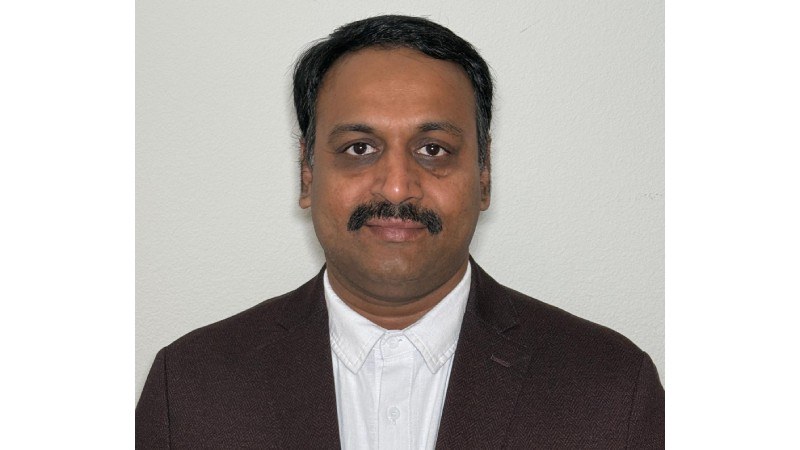
As businesses embrace digital transformation and AI-driven automation, the role of technical solution architecture has never been more critical. Software engineering is no longer just about coding—it’s about designing scalable, efficient, and resilient systems that can support complex enterprise needs. With cloud computing, AI-powered analytics, and full-stack development reshaping industries, technical solution architects are at the forefront of this evolution, ensuring that organizations can build, optimize, and scale their digital ecosystems seamlessly.
One of the experts driving this transformation is Rama Krishna Prasad Bodapati, an accomplished technical solution architect with a track record in system optimization, enterprise software development, and digital modernization. With years of expertise in IT infrastructure, software development, and cloud-based solutions, Bodapati has played a key role in modernizing legacy systems, enhancing technical frameworks, and ensuring seamless integration across multiple platforms. His contributions to enterprise IT transformation have earned him global recognition, including the Global Recognition Award.
Why Technical Solution Architecture is a Game-Changer
Technical solution architects serve as the bridge between business objectives and technology implementation. Their role involves understanding organizational needs, designing scalable system architectures, and leading development teams to execute complex solutions efficiently.
As companies transition to cloud-native applications and AI-powered automation, technical solution architects must design systems that are adaptable, secure, and optimized for performance. They are responsible for:
- Optimizing software infrastructure to support scalable and high-performance applications.
- Implementing best practices in cloud computing, AI integration, and enterprise system design.
- Ensuring seamless data flow between applications through microservices and API-driven architectures.
- Bridging the gap between software engineering teams and business strategy to ensure technology aligns with organizational goals.
“The real challenge isn’t just building applications—it’s about designing systems that grow, evolve, and adapt to business needs,” explains Bodapati, a Global Recognition Award Recipient.
He adds, “An optimized architecture allows businesses to scale efficiently without compromising on performance, security, or user experience.”
Driving Innovation Through Full-Stack Development
Beyond cloud-based architectures, full-stack development plays a crucial role in modernizing enterprise applications. Bodapati has been instrumental in leading digital transformation initiatives, particularly in upgrading legacy systems to scalable, cloud-based frameworks.
One of his most impactful contributions was his work on the Grant Delivery System Modernization (GDSM) project. This initiative focused on revamping the legacy Grant Delivery System (GDS), which manages the distribution of student financial aid for the State of California. Bodapati led the architecture, design, and implementation of a modernized grant management platform, which significantly improved:
- Scalability – Upgrading the infrastructure to handle higher volumes of applications efficiently.
- Operational Efficiency – Reducing processing times and automating workflows for seamless financial aid distribution.
- Cost Optimization – Lowering operational expenses by transitioning to a more efficient, cloud-based solution.
“Legacy systems, while functional, often become bottlenecks as organizations grow,” Bodapati, who is also a fellow at the Hackathon Raptors, explains. “By modernizing these systems, we ensure better performance, stronger security, and more streamlined operations—all essential for today’s data-driven enterprises.”
The Future of Technical Solution Architecture
As industries continue to adopt AI, cloud computing, and data-driven decision-making, the role of technical solution architects will become even more vital. The next wave of transformation will focus on:
- AI-Powered System Optimization – Leveraging machine learning models to predict system inefficiencies and automate optimizations.
- Edge Computing and IoT Integration – Ensuring real-time data processing and faster decision-making at the network edge.
- Cloud-Native Security Architecture – Strengthening cybersecurity frameworks as enterprises scale their cloud operations.
- Low-Code and No-Code Development – Enabling faster prototyping and deployment of applications without extensive manual coding.
With experts like Rama Krishna Prasad Bodapati leading the charge in system architecture and software engineering, businesses can ensure scalability, agility, and efficiency in their IT infrastructure. His expertise in full-stack development, cloud engineering, and enterprise software modernization continues to shape the future of digital transformation.
“The future of software engineering isn’t just about building applications—it’s about building intelligent, adaptable, and high-performance ecosystems that drive business success,” Bodapati emphasizes.
As companies navigate the next age of digital innovation, those that prioritize technical solution architecture will have the competitive edge needed to thrive in an increasingly AI-driven and cloud-first world.